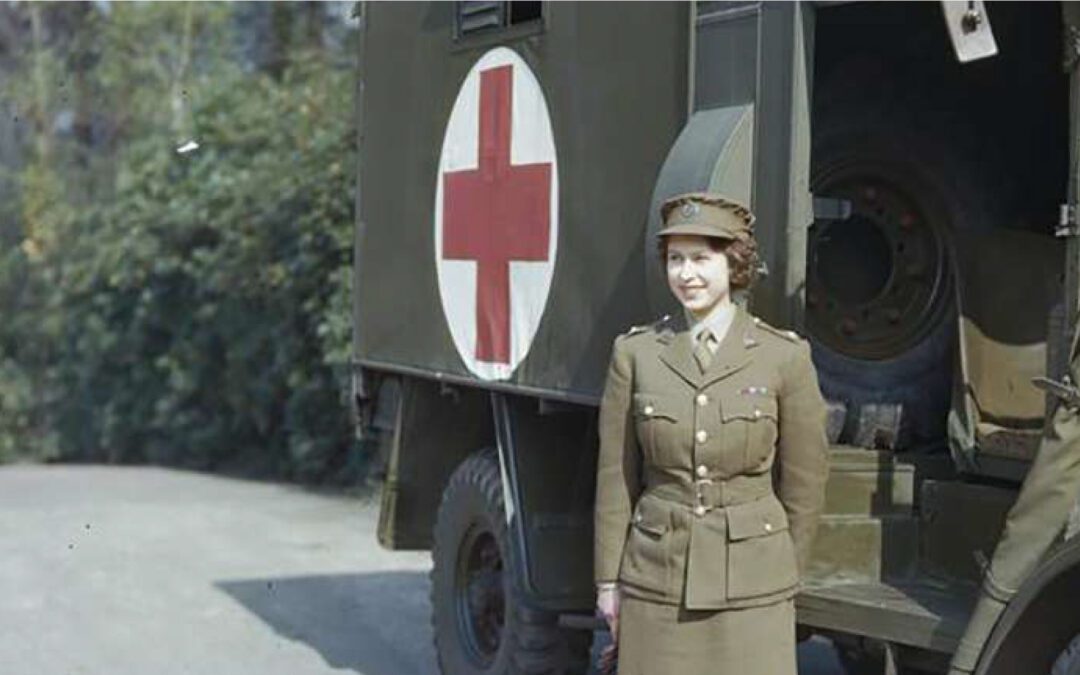It is with great sadness that today we heard of the passing of Queen Elizabeth II
To commemorate Her Majesty’s reign and service to her country, Eden Camp has delved into the life of the former monarch and hopes to shine a light onto her contributions during the Second World War.
Queen Elizabeth II is the second-longest reigning monarch in history, ascending to the throne on the 2nd June 1952 at the age of 27, having ruled the United Kingdom for more than 70 years. Her tenure on the throne is second only to French King Louis XIV.

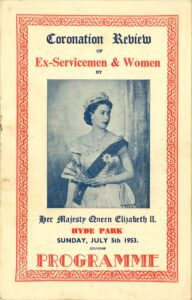
In 2015 she became the longest reigning monarch in British history, exceeding the tenure of Queen Victoria, her great-great-grandmother.
“Inevitably a long life can pass by many milestones — my own is no exception — but I thank you all and the many others at home and overseas for your touching messages of great kindness,” the Queen said at the time.
Hailed in the newspapers as a symbol of hope for the nation, Queen Elizabeth represented the New Elizabethan Age and a change from the hardships of the war years.
An Evacuee Princess
The Second World War changed the lives of millions, including the Royal family. Buckingham Place suffered a bombing raid on the 3rd September 1940, hitting the Royal Chapel, inner quadrangle, and Palace gates. Instead of leaving to safety, King George and his wife, Queen Elizabeth, remained at the palace during the Blitz and stood in solidarity with the London community.
Princess Elizabeth was only 13 years old when the war broke out and with her sister, was sent away from their home along with millions of other children, to avoid the bombing raids. They were sent to Windsor Castle, approximately 20 miles outside of London. The young princesses were two of over three million people—mainly children—who left cities for the safety of small towns and the countryside over the course of the war.
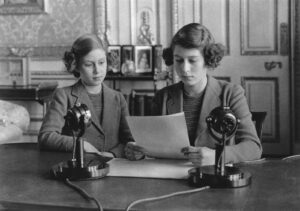
On October 13, 1940, in response to this mass movement of people, Princess Elizabeth gave her first address from the drawing room of Windsor Castle as part of the BBC’s Children’s Hour in an attempt to boost public morale. She spoke directly to the children who had been separated from their families as part of the evacuation scheme.
“Thousands of you in this country have had to leave your homes and be separated from your fathers and mothers. My sister Margaret Rose and I feel so much for you, as we know from experience what it means to be away from those you love most of all. To you living in new surroundings, we send a message of true sympathy and at the same time we would like to thank the kind people who have welcomed you to their homes in the country.”
A princess at war: Queen Elizabeth II during the Second World War
Later in the war, the Queen stood as a symbol for war-time governmental campaigns such as ‘Dig for Victory’ which encouraged families to make the most of their gardens to combat food shortages.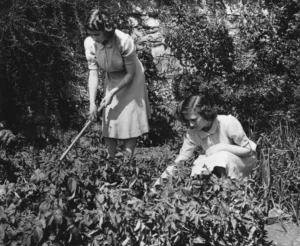
In 1943, she was photographed tending her allotments at Windsor Castle as part of the government’s “Dig for Victory” campaign, in which people were urged to use gardens and every spare piece of land to grow vegetables to help combat food shortages.
Queen Elizabeth II was the first female member of the British Royal family to become an active member of the British Armed Forces when she joined the Auxiliary Territorial Service at the age of 18.
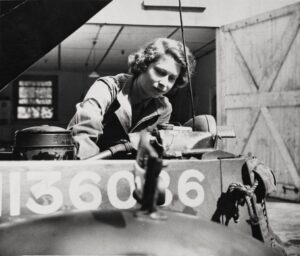

The A.T.S. provided key support during the war with roles as radio operators, mechanics, and drivers. The princess held the rank of a second subaltern and was later promoted to a Junior Commander. The princess chose to serve as a mechanic and in March 1945 she began her training and completed a vehicle maintenance course at Aldershot, in Surrey. She was often referred to as ‘Princess Auto Mechanic’ in contemporary newspapers.
While Princess Elizabeth spent the majority of her days at the training facility, it was close enough to Windsor Castle that the princess would return there each evening rather than sleep at the camp with her fellow ATS members. The King and Queen and Princess Margaret visited Princess Elizabeth at the Mechanical Transport Training Section in Camberley, Surrey, and watched her learn about engine maintenance.
When describing the visit to LIFE Magazine, the Princess commented “I never knew there was quite so much advance preparation [for a royal visit]… I’ll know another time.”
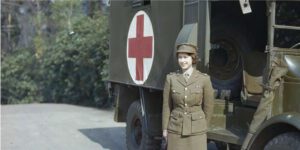
Celebrating Her Majesty’s Jubilee
The United Kingdom has just celebrated the Queen’s Platinum Jubilee, marking her seven decades on the throne.
You can listen to our Jubilee Podcast episode to explore the war contributions of the Royal Family by clicking here.

